I distinctly remember what I had encountered several years ago when I had visited a college in Goa. I was talking to one of the faculty members, standing outside the building. My attention was drawn to a pretty Red Pierrot butterfly flitting about and settling on a Kalanchoe plant in a pot. Even as I watched, it laid an egg! Slowly, I went close to the plant and looked about. What I saw, came as a surprise. I saw a larva that had burrowed inside the leaf, a fully grown larva that had come out of the leaf and I also saw a pupa on the soil. I witnessed all this while rooted to one place! Unfortunately, I did not have a camera handy on that occasion.
Almost two decades later, I got a chance to witness and photograph all the stages of a butterfly’s life cycle almost over a couple of days! This time it was a Swallowtail butterfly – the Common Mime.
Recently I was visiting the River Tern Lodge near Bhadra Tiger Reserve. I was aware of the fact that the Common Mime occurs in the area based on my prior sighting of a female laying eggs. She was laying eggs on a tender leaf several feet from the ground. I had managed to capture the act of egg-laying but could not shoot the egg itself.
I was told that there were a couple of larvae of the Common Mime in case I was interested in shooting them. I was thrilled! Quickly, I set about searching for the larvae and got pictures of what looked like a fully grown larva. As I looked around, I also found more larvae of earlier instars. Pictures were promptly taken. As the search progressed, I even stumbled upon and photographed a couple of eggs. When I came back to check on the eggs, I noticed that one of them had hatched and was seen not far from where the egg was. Of course, the story would not be complete if the pupa was not found. So, with peeled eyes, I checked each dry twig just to make sure that it was not a pupa – you will see why as we go along!
Though pictures were taken as and when the opportunity provided, I have, here, arranged them in an order that depicts the complete life cycle of a butterfly.
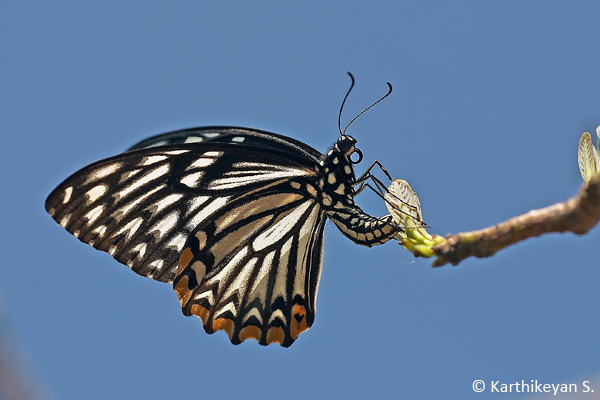 A Common Mime laying eggs on a tender shoot high up in the tree.
A Common Mime laying eggs on a tender shoot high up in the tree.
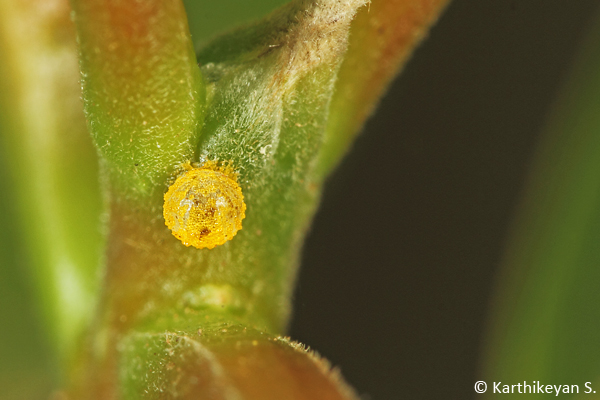
Egg of the Common Mime – barely bigger than a pin head!
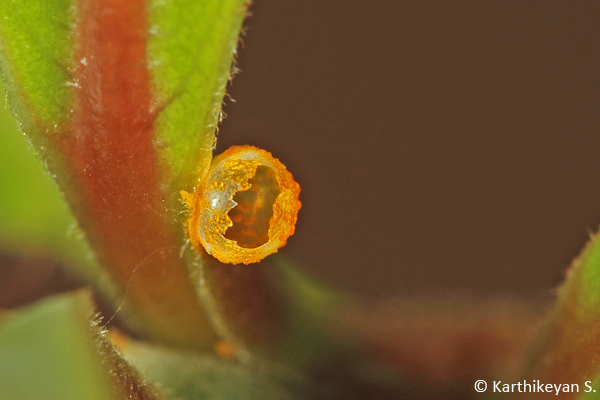 Butterfly larvae feed on the egg shell soon after emerging. However, this individual had gnawed the egg in the process of emerging leaving behind an interesting shape.
Butterfly larvae feed on the egg shell soon after emerging. However, this individual had gnawed the egg in the process of emerging leaving behind an interesting shape.
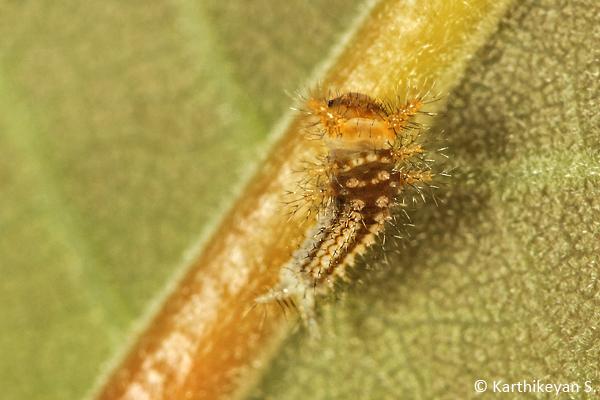 The newly emerged larva.
The newly emerged larva.
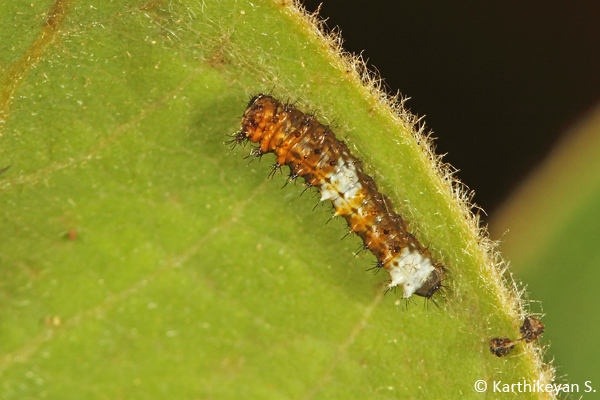 A later instar looking very different from the newly hatched larva.
A later instar looking very different from the newly hatched larva.
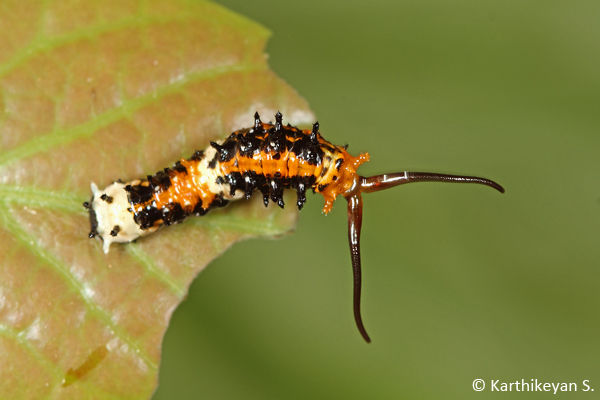 As I approached this larva close for photography, it suddenly put out the osmetrium, very characteristic of swallowtail larvae, perhaps in a bid to scare me!
As I approached this larva close for photography, it suddenly put out the osmetrium, very characteristic of swallowtail larvae, perhaps in a bid to scare me!
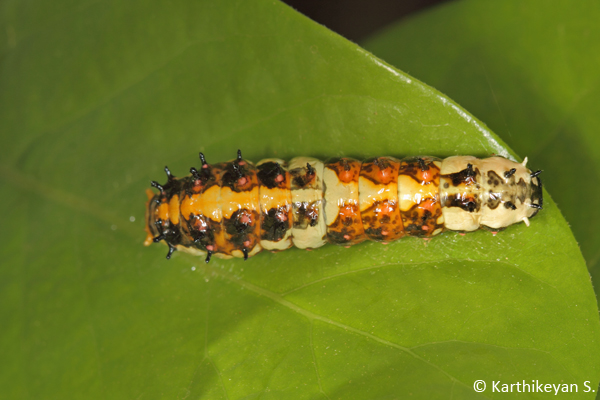 The next instar. As a larva grows, it sheds its skin a few times before pupating. In the process, it could look very different during each stage between any two moults. Often it even eats the shed skin!
The next instar. As a larva grows, it sheds its skin a few times before pupating. In the process, it could look very different during each stage between any two moults. Often it even eats the shed skin!
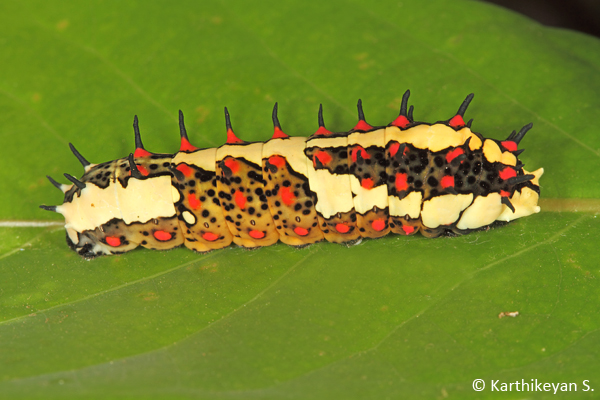 A fully grown larva ready to pupate.
A fully grown larva ready to pupate.
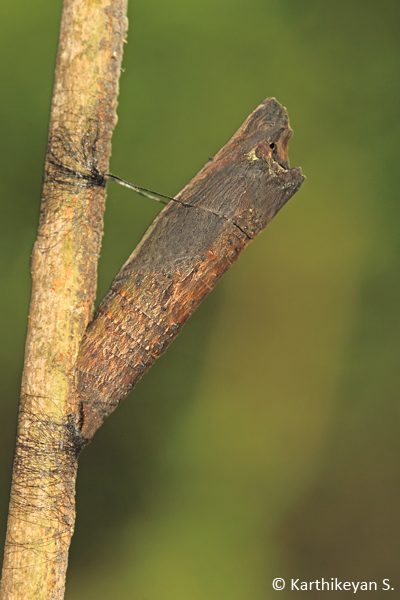
An amazing camouflage. The pupa of the Common Mime resembles very much like a broken twig. Spotting one of these can be quite a challenge.
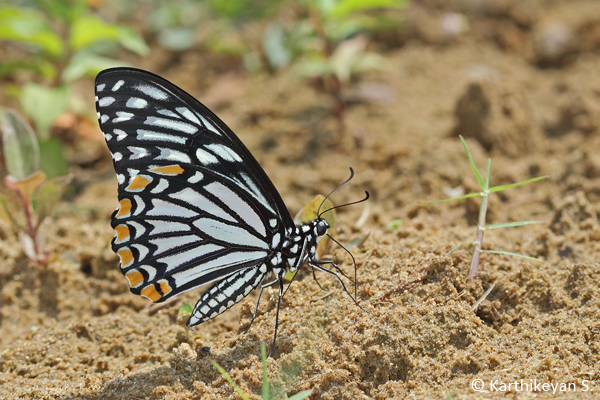 The adult Common Mime has two different forms – one that resembles a Blue Tiger butterfly …
The adult Common Mime has two different forms – one that resembles a Blue Tiger butterfly …
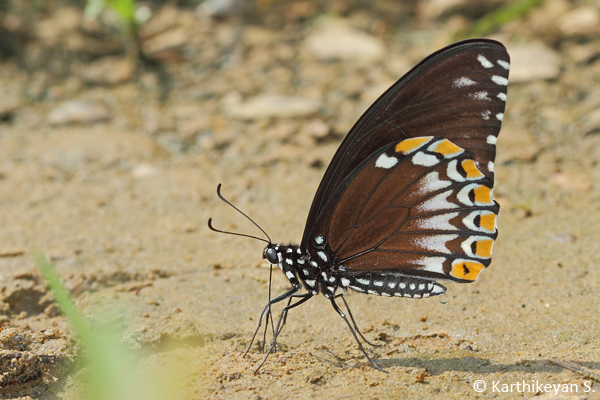 …and the other resembling a Crow butterfly. Both the Blue Tiger and Crow are unpalatable butterflies. Mimicry in butterflies is another story altogether!
…and the other resembling a Crow butterfly. Both the Blue Tiger and Crow are unpalatable butterflies. Mimicry in butterflies is another story altogether!
If you have a few plants in your garden, it should be possible to witness all this and more right in your garden. In an era, when land is at premium, the gardens have been reduced to a few potted plants in the balcony of high-rise buildings. Notwithstanding this, if you choose plants carefully with some prior knowledge of butterflies that frequent your area, there is every chance that you will be visited by one that will give you an opportunity to see the amazing process of a tiny egg eventually transforming into a butterfly!